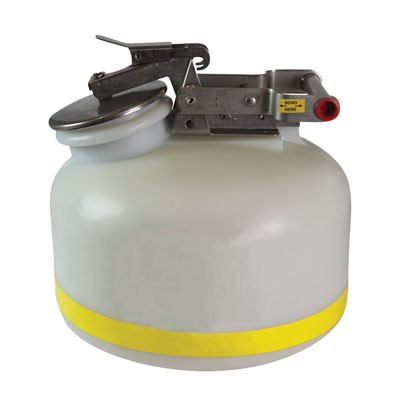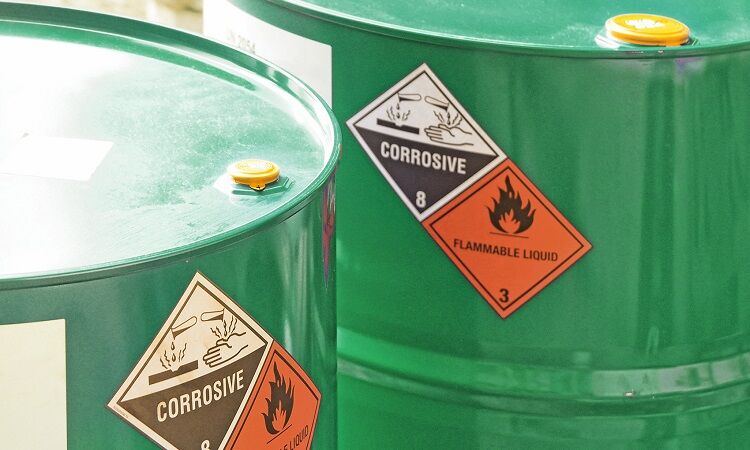Comprehending the Comprehensive Process of Liquid Waste Disposal: Finest Practices and Environmental Effect Considerations
The management of liquid garbage disposal is a complex issue that calls for a thorough understanding of different finest methods and their connected environmental effects. From the sorts of liquid waste generated to the approaches used for collection, therapy, and last disposal, each action plays an essential duty in safeguarding communities and public health and wellness. As regulative standards develop and innovation advances, the discussion around these procedures comes to be increasingly important. What implications do these adjustments hold for future sustainability initiatives, and how can stakeholders make certain that they are sufficiently resolved?
Kinds Of Liquid Waste
Comprehending the various kinds of liquid waste is crucial for efficient monitoring and disposal methods. Liquid waste can be generally classified right into a number of kinds, each needing special handling and therapy methods.
Industrial fluid waste often has harmful products, including heavy steels, solvents, and chemicals, created throughout manufacturing procedures. These wastes necessitate rigorous regulatory conformity to shield human health and wellness and the setting. Residential fluid waste largely describes wastewater generated from households, including sewage and greywater, which, although less toxic, can still position considerable dangers if incorrectly handled.
Agricultural liquid waste, including overflow from farms, typically consists of plant foods and chemicals that can cause ecological destruction otherwise treated effectively. Clinical fluid waste, created from healthcare centers, includes contaminated fluids such as bodily fluids and chemicals, requiring specialized disposal methods to stop infection and environmental contamination.
Last but not least, oil and grease waste, usually produced by dining establishments and vehicle sectors, can trigger extreme clogs in sewer systems otherwise taken care of effectively. Recognizing these groups assists in targeted methods for treatment, compliance with laws, and reliable disposal approaches, inevitably promoting environmental sustainability and public wellness security.

Collection Methods
Effective collection approaches are vital for the appropriate management of fluid waste, ensuring that it is collected safely and successfully before therapy or disposal. Different techniques are utilized depending on the kind of liquid waste created, the volume, and the details features of the waste.
One usual technique is using committed collection tanks or sumps, which are created to catch fluid waste at the resource. These systems often include pumps that facilitate the transfer of waste to larger storage containers or therapy facilities. Furthermore, mobile collection devices geared up with vacuum cleaner modern technology are utilized in scenarios where waste is created periodically or in hard-to-reach areas.
For commercial setups, closed-loop systems can effectively lessen spills and leakages, enabling the healing and reuse of fluid waste. It is also necessary to train workers on appropriate collection methods to reduce threats associated with dangerous substances.
Moreover, executing normal maintenance schedules for collection devices guarantees optimum performance and safety. The assimilation of sophisticated surveillance systems can enhance collection efficiency by offering real-time data on waste degrees and potential dangers. Overall, efficient collection approaches are foundational to lasting liquid waste monitoring practices.
Therapy Processes
Treatment processes play a crucial function in the administration of liquid waste, transforming potentially hazardous products right into recyclable resources or safe effluents - liquid waste disposal. These procedures can be generally classified into physical, chemical, and biological approaches, each customized to resolve certain pollutants existing in the waste stream
Physical treatment methods, such as sedimentation and filtration, work by removing put on hold solids and particle issue. These techniques are usually the very first step in the treatment chain, efficiently decreasing the load on succeeding processes. Chemical treatments entail making use of reagents to neutralize harmful materials, precipitate heavy steels, or oxidize organic pollutants, therefore improving the safety of the effluent.
Organic therapy procedures, including turned on sludge systems and anaerobic digestion, maximize the natural capacities of bacteria to degrade natural issue. These techniques check are particularly efficient for wastewater having eco-friendly pollutants. Advanced therapy innovations, such as membrane layer filtering and advanced oxidation procedures, are progressively used to attain higher levels of filtration.
Incorporating a mix of these treatment techniques not just ensures compliance with regulative criteria but additionally promotes ecological sustainability by recovering useful sources from fluid waste.
Disposal Options
Just how can companies ensure the safe and accountable disposal of fluid waste? Reliable disposal options are essential for securing public health and the environment. The primary methods include land incineration, disposal, and treatment followed by discharge into municipal wastewater systems.
Land disposal involves the careful containment of fluid waste in marked land fills, ensuring that it does not seep right into bordering dirt or water. Incineration, on the other hand, topics fluid waste to heats, transforming it right into ash and gases, which need appropriate filtering to reduce emissions. This method is suitable for hazardous wastes that can not be treated via typical methods.
In situations where liquid waste can be treated, companies might select chemical or organic therapy processes to neutralize hazardous components prior to releasing read what he said the treated effluent right into local systems. This path generally lines up with regulatory needs, making sure that the effluent meets safety and security requirements.
Eventually, companies have to carry out comprehensive analyses of each disposal choice to determine its feasibility, considering aspects such as waste composition, regulative compliance, and potential risks to wellness and the environment. By picking suitable disposal approaches, companies can add to an accountable waste monitoring technique.
Ecological Effect
The environmental impact of liquid waste disposal is an important factor to consider for companies looking for to minimize their ecological impact. Furthermore, the discharge of untreated or inadequately treated waste into surface waters can result in eutrophication, leading to oxygen exhaustion and the succeeding fatality of fish More about the author and other organisms.

To reduce these influences, organizations have to embrace ideal practices such as applying rigorous waste treatment procedures, advertising recycling and reuse, and adhering to regulative requirements. By taking a proactive technique to fluid waste management, entities can dramatically reduce their environmental impact while supporting lasting development objectives. Inevitably, a thorough understanding of the ecological impacts related to liquid waste disposal is vital for educated decision-making and liable stewardship of natural deposits.
Conclusion
Effective monitoring of fluid waste is vital for guarding environmental integrity and public wellness. By embracing best techniques in disposal, collection, and treatment, alongside adherence to governing requirements, the possibility for dangerous contamination of environments can be considerably reduced. Constant innovations in innovation and procedures add to sustainable waste management efforts. Eventually, a comprehensive understanding of liquid garbage disposal not only alleviates ecological impacts yet likewise fosters a commitment to liable resource management and ecological stewardship.
The administration of fluid waste disposal is a diverse concern that calls for a comprehensive understanding of different finest methods and their linked ecological influences. From the kinds of fluid waste created to the approaches used for collection, therapy, and last disposal, each action plays an essential duty in safeguarding communities and public health.The environmental impact of liquid waste disposal is a critical consideration for organizations seeking to minimize their eco-friendly impact. Inevitably, a thorough understanding of the ecological effects associated with liquid waste disposal is necessary for notified decision-making and accountable stewardship of natural sources.
Inevitably, a thorough understanding of fluid waste disposal not only mitigates environmental influences yet likewise fosters a dedication to liable resource management and ecological stewardship.